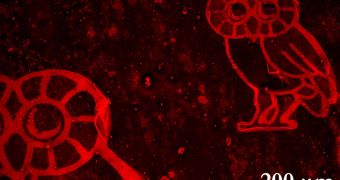Scientists at the Rice University demonstrated that a bi-dimensional carbon compound can be outfitted with organic molecules, thus opening up organic chemistry as a new field for graphene applications.
For the past 6 years or so, physicists and chemists have been trying to figure out the extent to which the material can be useful to science. However, their efforts at cataloging all that graphene can do are constantly stifled by the fact that new uses are continuously found for it.
Just when they think that they have the material figured out, some research team releases a new paper such as this one, showing not a single new use, but an entire class. Until now, experts had no idea that the material – the strongest, toughest known to man – can be used for organic chemistry applications.
In the new study, experts basically demonstrated that it is possible to change the atom-thick material into a superlattice. Such a structure can then be augmented with organic molecules. The new findings were based on previous studies on graphene manipulation, also conducted at Rice.
Details of the study were published in this week's online issue of the top scientific journal Nature Communications. The work was carried out in the lab of James Tour, the T.T. and W.F. Chao Chair in Chemistry, and a professor of mechanical engineering and materials science, and of computer science.
He and his team developed a two-step method for manipulating graphene. The approach makes it possible for organic molecules to attach to the basal plane of a graphene sheet. What is even more remarkable is that this can be done in whatever patterns researchers want.
“They would mostly go to the edges, not the interior. But with this two-step technique, we can hydrogenate graphene to make a particular pattern and then attach molecules to where those hydrogens were,” Tour explains.
“This is useful to make, for example, chemical sensors in which you want peptides, DNA nucleotides or saccharides projected upward in discrete places along a device. The reactivity at those sites is very fast relative to placing molecules just at the edges. Now we get to choose where they go,” he adds.
The patterns experts create on graphene sheets can be viewed using a technique called fluorescence quenching microscopy (FQM), which literally makes the organic molecules lit up. The image on the left shows two owls that were drawn on graphene sheets using organic molecules.
This study was made possible by grants from the US Air Force Office of Scientific Research, the Sandia National Laboratory, the National Science Foundation's Nanoscale Science and Engineering Initiative, and the Office of Naval Research MURI graphene program.

 14 DAY TRIAL //
14 DAY TRIAL //